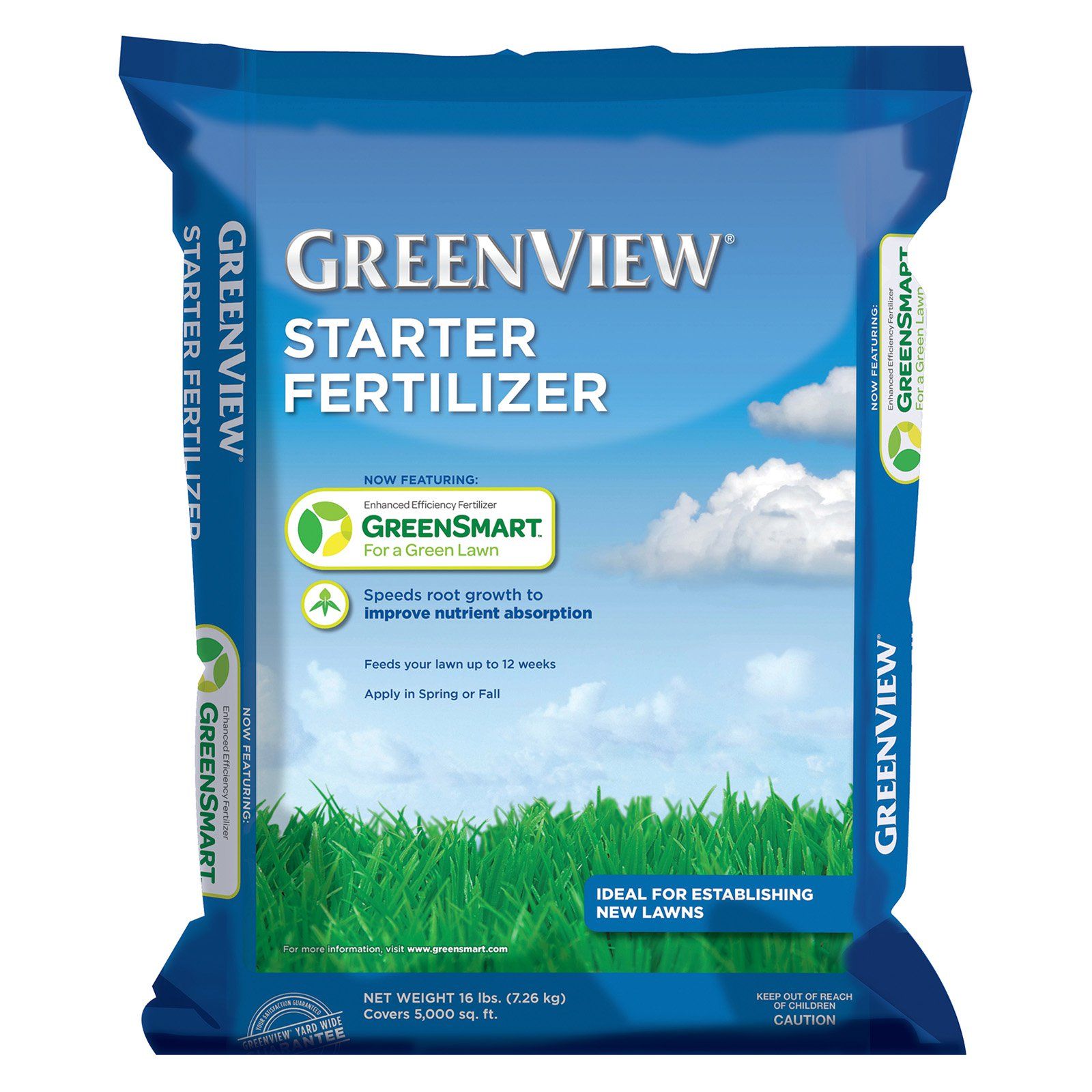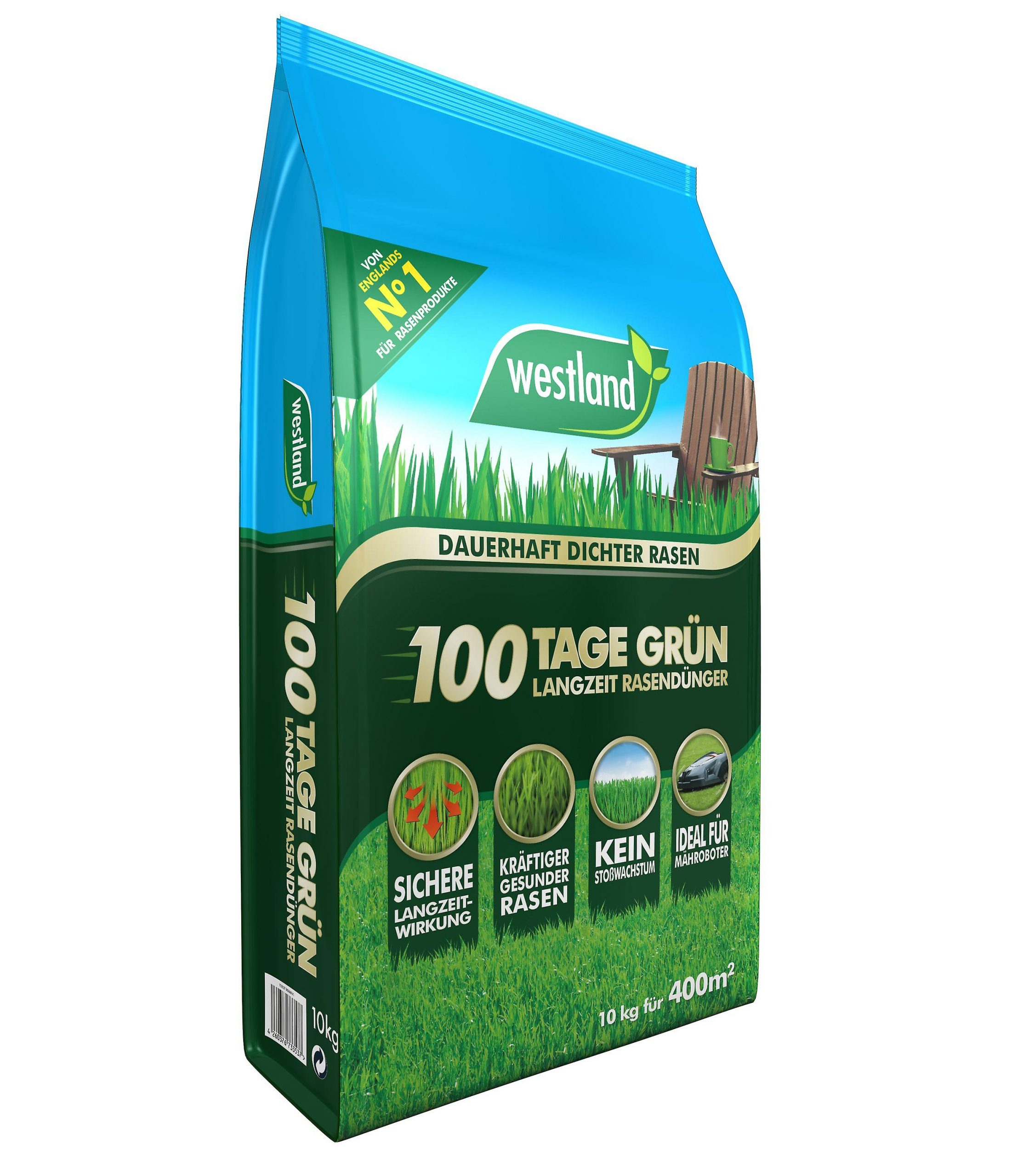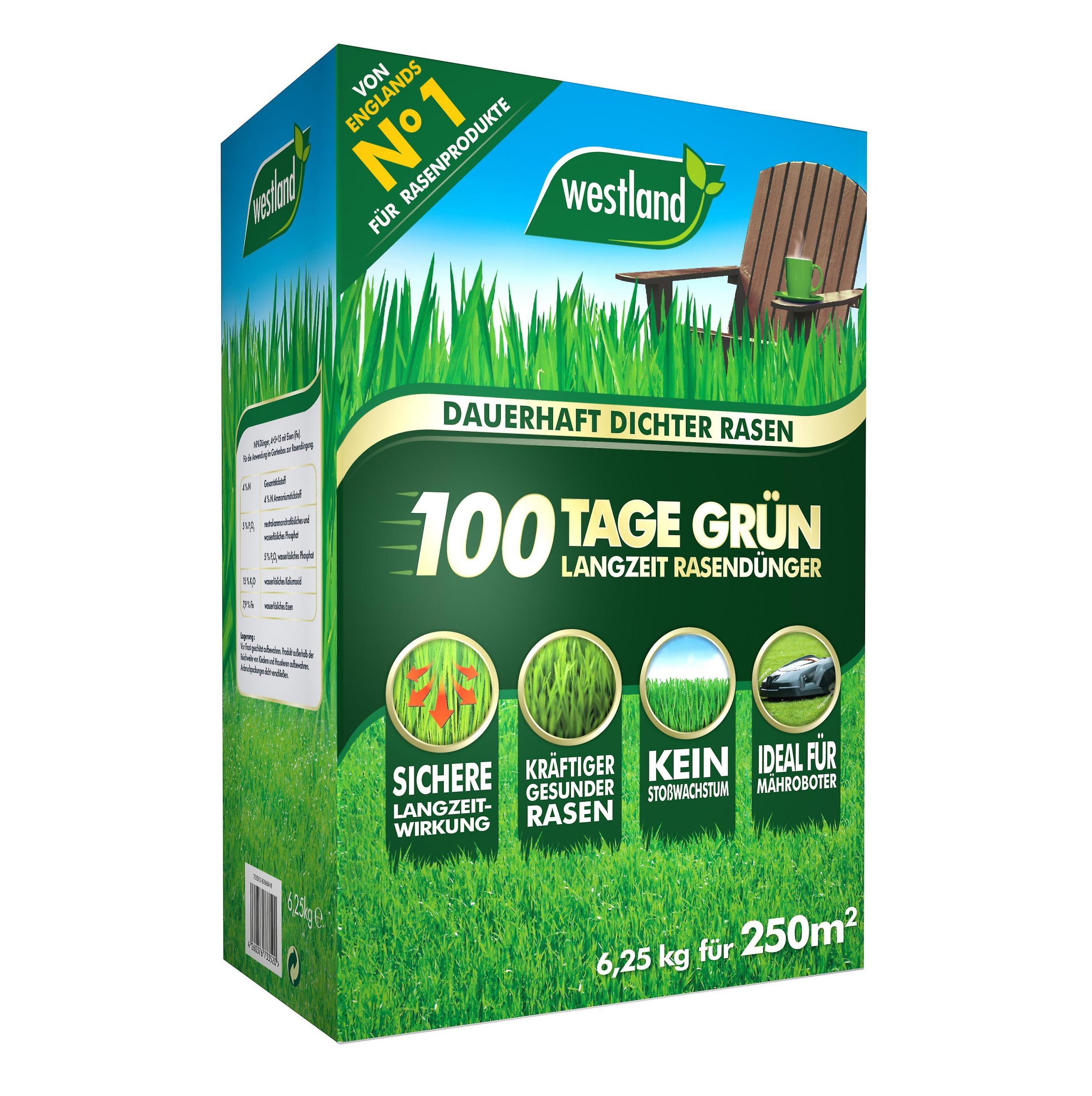To Figure How Much Nitrogen Fertilizer To Apply To Lawns:
- Divide rate of nitrogen desired by percent nitrogen in bag
- Multiply answer found by square footage of lawn and divide by 1,000
EXAMPLE: 15-5-10 fertilizer, 7,000 sq ft, want to apply 1 lb. nitrogen/1,000 sq ft
- 1 pound divided by .15 = 6.66, round to 6.7
- 6.7 multiplied by 7,000 = 46,900 divided by 1,000 = 46.9, or 47 pounds
Therefore, need about 47 pounds of 15-5-10 fertilizer to cover entire lawn
After calculating how much to apply, when to apply is the other important decision. Early fall is a key time for fertilizing lawns in northern Illinois. The schedule below outlines when to apply based on how many applications are to be made annually and desired lawn quality. Use controlled-release nitrogen fertilizers in May and September and a fast-release source in late fall. Consider Mother’s Day, Labor Day and Halloween as reminders or favorable times to fertilize lawns in nothern Illinois.
Youve Watered After Fertilizing Now What
After this initial watering, avoid watering your lawn for a couple days so the nutrients can settle in. Then, return to your regular lawn-watering schedule, and remember these tips:
- Dont water every day. Water deeply and infrequently. Water too often, and it encourages shallow, needy roots. Water less often but deeply, and roots will grow deeper and healthier and be happy with less water. Grass needs about an inch of water each week.
- Early morning is the best time to water. Its still cool, so all that valuable water wont evaporate in the hot sun. Wrap up your watering as close to sunrise as possible. If sunrise is at 6 a.m., you should be done watering at 6.
Is Your Lawn Ready For A New Best Friend
Ready to nourish your grass with fertilizer for a green and healthy lawn? Choose an Idaho Falls or Boise professional lawn care service that bundles your yards most-needed treatments into one convenient, no-fuss plan.Fertilizing, weed control, grub control. Done.Weve got your back. Got a few minutes? Thats all you need to get started. Fill out the form on this page. Call us at 656-9131.
You May Like: What Chemicals Do Lawn Care Companies Use
Enjoy Your Lovely Green Lawn
With the lawn fertilizer schedule basics Ive outlined in this article, you now have the information you need to properly apply fertilizer, giving your lawn the essential nutrients it needs to flourish.
You also know the types of fertilizer you should look for and other important tips to keep in mind to get the best possible results.
And if youre looking for an actionable, detailed plan, grab my free lawn care cheat sheet here.
STOP GUESSING
Improving Your Lawn Doesnt Have to Be Difficult
Get my FREE cheat-sheet and learn exactly what to do, and when to do it for a low-maintenance lawn youll be proud of.
Youll get a copy customized for your growing zone.
Slow Release Lawn Fertilizers

If you choose a slow-release fertilizer, you wont have to apply it so often. This is because the fertilizers nutrients will break down over an extended period. You will be able to fertilize only between every six and eight weeks.
This is actually my preferred type of fertilizer for established lawns. I prefer Milorganite, but have used Purely Organic Lawn Food as well. Both are organic options .
Your frequency of watering your lawn will affect how often youll need to do it. If you dont use a slow-release fertilizer, you will have to fertilize more often.
With slow-release fertilizers, its best to choose one that has enough amount of nitrogen. Remember that your lawn needs only about a tenth of a pound of nitrogen per week.
Having too much nitrogen will only result in making the grass grow too fast, creating the need for more frequent maintenance. Your lawn should get around two or three pounds of nitrogen during the growing season as a whole.
Look for a granular fertilizer for your lawn. This is the best choice for homeowners that want to fertilize their lawns themselves, as its so simple to apply in the right way just by using a spreader. If you plan to have a professional do the work and utilize a tanker truck, they can use a different type. Theyre able to work with trickier types, as they have the experience to get it even no matter what.
Recommended Reading: Why Do I Have So Much Clover In My Lawn
Learn More About Revive
An application of Revive to those dry areas in summer will work wonders. Revive contains a special combination of surfactants that help re-wet hard-packed and dry areas. Revives organic nutrients will re-invigorate those dry lawn areas and make them lush and green again.
You can have your dream-come-true lawn with these easy steps and help from your local experts at any IFA Country Store. Stop by and talk with us about our 4 step lawn care program. It provides not only the lushest, deepest green, weed-free turf, but improved, insect-free soil that grows deeper, stronger roots. Overall, it grows a healthier lawn that requires less water and holds up better through heat and drought with consistent seasonal applications. With 23 locations ready to serve you, a beautiful lawn is just an application away.
How Often Should Fertilizer Be Applied
The answer to this question depends on several factors. As a rule of thumb, fertilizing a lawn twice a year is sufficient when applying a fertilizer with a high nutrient content. The best advice is to choose a single supplier and product for that particular year/growing season and follow the instructions that they provide, paying attention to the recommended frequency of application. Some granular fertilizers will only require two applications per year, as they slowly release their nutritional value to the soil.
Soluble feeds can be applied from anywhere between every three weeks through to annual applications depending on the product chosen.
Working out how often to apply fertilizers is tricky, so we have created two tables below explaining how often to apply popular U.S. and U.K. fertilizers. The tables will help you choose which fertilizers are the best choice depending on what you are looking to achieve or which problems you are looking to overcome with your lawn.
You May Like: How To Water Your Lawn
Feeding The Lawn In The Summer And Fall
Warm-season grasses thrive in the heat of the summer and can be fertilized throughout the growing season. However, cool-season grasses are in a survival mode during the heat of the summer. Refrain from applying fertilizer to a lawn in mid- or late-summer if you live in a climate where cool-season grasses are in your lawn seed mix. A cool-season lawn should need nothing other than water and pest management until September.
Most lawn experts recommend a mild dose of a turf-builder fertilizer formulation in the early- to mid-fall, while the turf still has several weeks of active growth before dormancy. This application will help build robust root systems going into winter and restart the growing cycle in the spring. You are not looking to return your lawn to the green of summer. Heading into winter, you can expect a natural slowdown of your lawns growth and the loss of its green luster.
Recommended Reading: Getting Rid Of Violets In Lawn
Fertilizing At The Wrong Time
Many homeowners dont follow a lawn fertilizer schedule. They fertilize when they think their lawn needs it, when they have time or when the stuff is on sale.
Heres when to fertilize lawn: If your lawn fertilizer schedule is once per year, apply it around Labor Day. Thats when your lawn is the hungriest and when it will respond best to the nutrients it receives. Fertilizing at this time will help replenish food reserves after a long, stressful year of growing and before the harshness of winter sets in.
If your lawn fertilizer schedule is twice per year, apply the second application about the middle of October. This acts like a second helping of much-needed food going into winter. A third application can be added in mid to late spring and can be combined with your crabgrass preventer. A fourth application, if you feel the need, can be added mid-summer. Watch the weather when applying midsummer fertilizers. Fertilizing during hot, humid weather can harm your lawn. An exception would be using an organic fertilizer. They are much more lawn friendly during the dog days of summer.
In the spring, apply just enough fertilizer to help green up your lawn. About half the normal amount will do. Even without fertilizer, your lawn naturally grows quickly as soon as temperatures become consistently higher. Have you ever noticed that grass grows fastest in the late spring and early summer? Why promote even more growth at this time by fertilizing?
Recommended Reading: Lawn Mowing Hiring
Recommended Reading: What Is The Best Battery Lawn Mower
Is There A Standard Amount Of Starter Fertilizer I Should Use
If you didnt get a soil test to determine how much starter fertilizer to use for your lawn, Landschoot offers these general recommendations:
- Starter fertilizers should be applied at 0.5 to 1 lb. nitrogen per 1,000 square feet. Amounts in excess of 1.5 lb. nitrogen per 1,000 square feet can burn the young turf and result in poor establishment.
Quick-release nitrogen will speed up seedling development.
Pro Tip: Landschoot notes, Application of a starter fertilizer is not a substitute for the phosphate and potash recommended on your soil test report.
Should I Water Lawn After Fertilizing
At Master Lawn, we typically say to wait 24 hours before watering your lawn after fertilizing. But it is important to make sure that it does receive a good watering session soon after that 24 hour waiting period. Watering helps the fertilizer to activate and to break down and begin feeding nutrients to the lawn.
Also Check: Do It Yourself Lawn Care Steps
How Long After Fertilizing Should I Wait To Water My Lawn
It depends on the fertilizer. Some lawn foods perform better when you water them in right after applying, while otherssuch as some weed-and-feed productsneed to be watered a day or two after fertilizing. It all comes down to this: Check the product directions on the bagtheyll tell you when to water.
You May Like: Cost Of Trugreen Annual Plan
What Should You Look For When Buying Fertilizer

As you shop for fertilizer, you will notice that bags have labels with three numbers.
These figures point to the percentage of potassium, phosphate, and nitrogen. These are important, as these nutrients are the most important ones for a healthy lawn.
The nitrogen number usually comes first, the phosphate number after that, and the potassium number last:
Nitrogen Phosphate Potassium
The remainder of the contents will have filler material. This is important too, as it makes it easier for you to apply the product evenly. Generally, a good mixture for your lawn in spring is 20-5-10 .
Don’t Miss: What Size Lawn Mower Do I Need
Can You Fertilize Your Lawn Too Much
Its very easy to fertilize your lawn too much. Fertilizing your lawn with too much fertilizer in one application or not allowing enough time between applications, leads to three problems.
As long as you follow the instructions found on the packaging of the fertilizer, the three problems above can be easily avoided.
How Long After Fertilizer Can I Seed A Complete Guide
Seeds demand favorable environmental conditions so that they can grow, and germinate to their fullest. To ensure the proper germination, we first need to prepare our land for it. If you are about to set your lawn, you must be wishing for the best results.
Before starting, many questions might pop up in your mind. What fertilizers should I try? Should I seed first or prepare the land first? What are the best environmental conditions ? How long should I wait after fertilizing my land? WELL! This article will answer all your queries. Follow the instructions regarding the fertilization process and seeding. You will be able to jog on a lush green lawn.
Continue reading and get to know about best practices to grow a lush green garden or lawn.
You May Like: How Much Does It Cost To Have Your Lawn Fertilized
How Much Should I Water My Lawn After Fertilizing
How much fertilizer you need is directly impacted by your watering schedule. The more you water your lawn, the more fertilizer it will need. As the grass grows, it uses more nutrients. If you have an automatic sprinkler system, you should fertilize your lawn about every six weeks. You dont want the watering to outpace the fertilizing as that could negatively impact the lawns growth cycle. If you dont have a sprinkler system, you can wait an additional two weeks between applications. Also, be sure to carefully read the fertilizer label to learn whether you should water the lawn before or after applying the product. Granulated fertilizers need moisture to break down after application, while other fertilizers require you to soak the lawn beforehand.
Remember To Follow The Instructions
The specific instructions you need to follow depend on the particular type of fertilizer that you buy, and your lawn fertilizer schedule may vary depending upon the product you use.
You must read the instructions that are set out on the bag and follow them meticulously.
First ascertain the size of the lawn.
Once youve done that, you can measure out the correct quantity of fertilizer. Its important that you refrain from applying a greater amount of fertilizer than the label sets out.
Even distribution of the fertilizer is essential. You will need a high-quality spreader in order to ensure that this is easy to do. This will make sure that the particles of nutrient are evenly distributed over the grass, and this will maintain the health of your lawn, as well as the consistency of color.
You May Like: How Often Can You Fertilize Your Lawn
How Often You Should Apply Fertilizer To Your Lawn
Though fertilizer has its benefits, you dont want to overdo it. A full feeding is recommended at least 5-6 times per year. You want to feed your lawn when its growing most rapidly. However, you should base the frequency on your climate and the type of grass you have. For example, cool season grasses can be fertilized in late spring, but only if necessary.
Warm season grasses, like Bermuda grass, St. Augustine, zoysia, centipede and buffalo grass, should be fertilized in spring. Depending on the amount of water your grass gets, aim to reapply your fertilizer every 6-8 weeks. Keep a watchful eye on your grass. If it looks thick and green, you can probably skip the feeding. If its starting to look brown or black, give your lawn some TLC.
Not All Lawn Fertilizers Are The Same
If you’ve shopped for lawn fertilizer before, you might have noticed some numbers on the label that look something like this: 32-0-4. Its easy to ignore, but dontthis code says a lot. The numbers stand for nitrogen, phosphorus, and potassium , and they tell you the percentage of those ingredients in the product by weight.
Heres how those letters and numbers add up for the look of your lawn.
Recommended Reading: How Much Topsoil For Lawn
How To Apply Lawn Fertilizer
There are several ways to apply lawn fertilizer. Using a spreader provides more even coverage than fertilizing by hand. Hand fertilizing often results in burns where the fertilizer is concentrated and pale areas that dont get as much fertilizer as they should.
Broadcast or rotary spreaders are easy to use and dont cause striping like drop spreaders. The advantage to drop spreaders is that there is no chance of overthrow getting fertilizer on streets, sidewalks, or driveways. With a drop spreader, you have to make two trips over the lawn at right angles. For example, if you make your first trip over the lawn in a north-south direction, the second trip should run east to west.
After applying the fertilizer, water the lawn thoroughly. Watering rinses the fertilizer off the grass blades so that they wont burn, and it allows the fertilizer to sink down into the soil so it can get to work. Keep kids and pets off the lawn for the amount of time recommended on the label, which is usually 24 to 48 hours.
Comparison Between Granular Fertilizers

Organic fertilizers have added benefits such as micronutrients, potash, and microorganisms that are good for your soil. Synthetic fertilizer does not have these other components because it is a chemical fertilizer.
This is also a drawback of synthetic fertilizers as these chemicals are often poisonous. They can often be harmful to the environment when they end up in rainwater runoff that flows to bodies of water or seeps into the water table.
Ensure that the forecast does not call for heavy rainfall that might wash away the fertilizer.
Also, keep children and pets off of a freshly fertilized lawn until 24 hours after it has dried.
How long it takes for granular fertilizer to work depends largely on the type of fertilizer you use.
Synthetic fertilizers work far more quickly than organic fertilizers.
This is due to the need for organic fertilizers to decompose. The byproducts of the decomposition are what actually fertilize the soil.
Thus, someone looking for a quick boost or green-up will benefit more quickly from a synthetic fertilizer.
You May Like: When To Spray Lawn For Mosquitoes